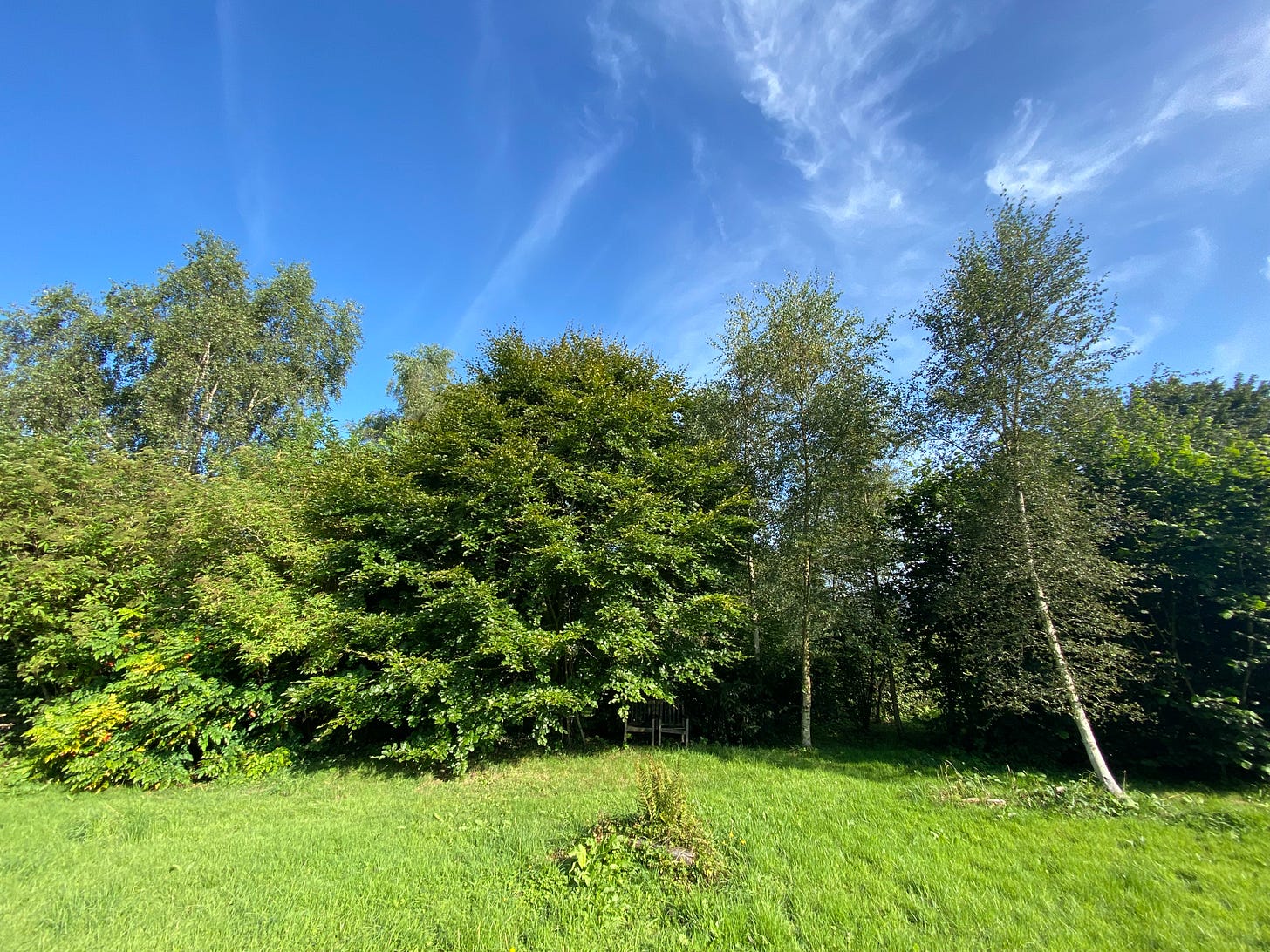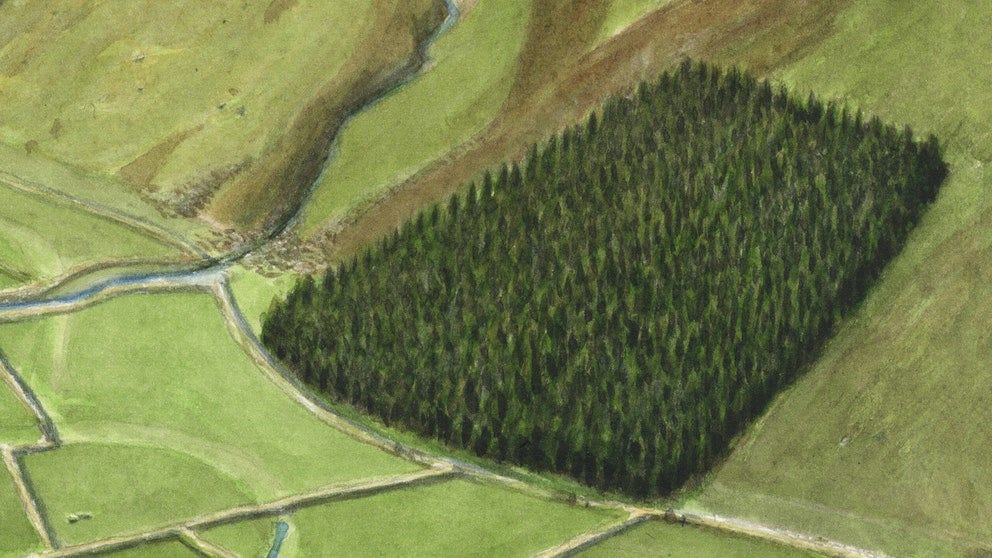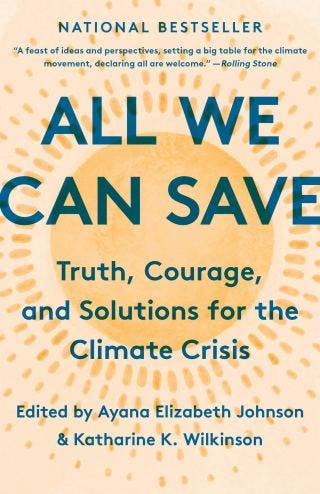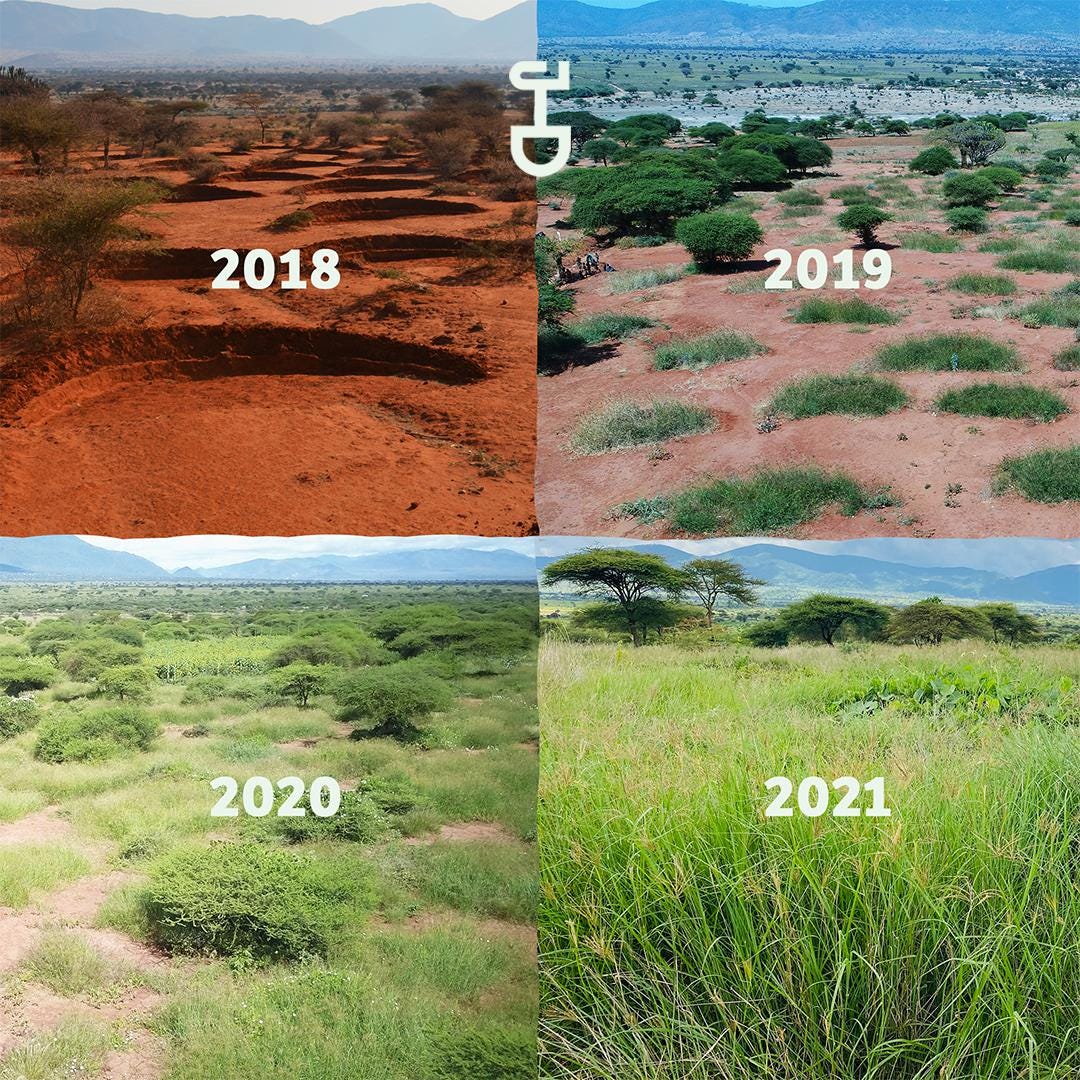Regen Notes #15
Climate, Carbon, Biodiversity, Learning from Plants, Rewilding, Nature Based Solutions, Zoom Regenerative, Living Future Europe Masterclass, Collaboration, Lancashire Excellence and JustDiggit.
Welcome to Regen Notes 15, a fortnightly newsletter of regenerative news, stories and more, with a sideways focus on the built environment, curated by Martin Brown, Fairsnape.
Regen Notes is a companion to Zoom Regenerative, where we join up regenerative dots, explore, celebrate and pollinate themes that invigorate and feed our curiosity.
Regen Notes is reader-funded. If you value independent regenerative curation and journalism, please consider supporting by becoming a paid subscriber.
We should not be using the word sustainability until we give back as much as we take. Yvon Chouinard, Patagonia
Climate changed …
Widely reported recently, findings from the State of the UK Climate 2020 report that ‘extreme weather will become the norm, will strike more frequently owing to the climate crisis … and the UK is not prepared’ The Guardian
The Guardian’s video showing what one month of extreme weather looks like should be another wake up call. The built environment, or human made landscapes features in nearly all of the extreme weather events shown here.
All of which increases the urgency to act, not just on adaptation in preparation for extreme weather, but with regenerative mitigation approaches. Cara Kennelly summed it nicely in a linkedin post “That we are still faced with climate hesitancy (and even deniers) is I think the saddest thing. We are risking the lives and quality of life for so many people that haven't even been born yet, not to mention the other species who won't be able to adapt to the new climate” . As explored in Regen-Notes 14, the tipping point in acting is now and within the coming five-year window.
“the AQI was over 500, and one morning it reached 800. We were breathing our cars, our refrigerators, our metal roofs and generators. Dead birds and bobcat and bear and elk. And of course, we were breathing our trees”.
(from Fire and Ice, a ‘shatteringly beautiful essay’ from Debra Gwartney on the last days of her partner, the Artic Dreams author Barry Lopez, whose home was destroyed by wildfire.
Fossil Fuels no more …
Welcome news from Lendlease who will end the use of liquid fossil fuels on UK construction projects, setting an objective that we hope many will now surely follow. However on-site fuel carbon is a small part of the carbon reduction tasks we face.
Mandatory Capping Carbon …
Part Z is an UK industry call from a group of sustainability leaders, (including the Institution of Structural Engineers (IStructE), the Chartered Institute of Building Services Engineers, the Embodied Carbon Group at Feilden Clegg Bradley Studios, and the Whole Life Carbon Network) for mandatory carbon limits, assessments and reporting to be set on buildings projects over 1000m2 as part of the Building Regulations. The proposal has wide support across industry
If enacted, it would mandate the assessment and reporting of whole life carbon on all building projects over 1,000m2 from 2023.
Many projects already assess whole life carbon on their projects as part of in-house, client or local plan climate commitments and want to see a regulation to create a level playing field on all projects. Embodied carbon has been enshrined into law in Finland, Sweden, France and the Netherlands.
This would bring those who are heard to say “we will only do (sustainability) when its a legacy requirement to do so” into the carbon reduction movement. However, it is always worth remembering that complying with code or regulations is only one step away from being illegal. We should strive to do more, with or without regulations.
A focus of the Part Z proposal would be to address embodied carbon, that makes up 50% of the WLC. And of that, with approx 80% from materials, 14% from transport and transportation and <10% from construction energy, the proposed Part Z should foster greater collaboration across the design, material and construction sectors.
Part Z could also see a return to effective, true, value engineering with regards to material specification and construction methodology, switching the emphasis away from just (lowest) cost to include other vital regenerative and restorative imperatives.

Biodiversity Net Gain …
The government’s new metric for biodiversity will have to be urgently improved if it is going to be fit for its purpose, academics and conservationists have warned. The Guardian
The biodiversity net gain (BNG) metric, published by Natural England in July, outlines how new roads, houses and other building projects must achieve no net loss of biodiversity, or achieve a 10% net gain elsewhere if nature is damaged on site.
However, the algorithm and metric does not value scrubby landscapes dominated by bramble, thistle and ragwort, which are often key features of rewilding projects. Instead, it logs them as a sign of “degradation”.
Water shortage stops town’s new development …
Oakley, Utah has put a stop to new development because it doesn’t have enough water to go around. The New York Times Groundwater and streams vital to both farmers and cities are drying up in the West, challenging the future of development.
Rewilding, What’s wrong with this picture? …
Rewilding Britain has produced a brilliant video and blog illustrating What is Rewilding and pulling apart scene by scene on what can be seen as problems and solutions.
On timber:
These dark angular swatches of trees are dense blocks of conifers grown for timber. Although forestry is slowly changing, they’re still often comprised of Sitka spruce, a fast-growing tree that’s native to Alaska. The conifers are usually planted close together in rows. They’re not representative of how our airy, mixed native woodlands would have grown and evolved after the Ice Age.
We need to find ways to reduce our demands for wood and grow more timber for felling while expanding our natural, biodiverse, carbon-rich rainforests and woodlands.
On river courses:
The river is unnaturally straight. Like so many rivers in Britain, it has been straightened, widened and deepened. In some places, it has been separated from its floodplain by embankments. You can see the faint outlines of its original meandering course in the fields, the river’s floodplain. Some water is settling there.
During heavy rains most of the rain that falls in this catchment will rush off these billiard table hills and hurtle down this channel, increasing flood risk downstream.
Nature-Based Solutions …
Nature-Based Solutions was also explored in Nature Journal perspective
While most efforts toward (net zero) have been focused on reducing fossil fuel use, new science shows that natural climate solutions—based on the conservation, restoration and management of forests, grasslands and wetlands—can deliver up to a third of the emission reductions needed by 2030.
New research, led by The Nature Conservancy and 15 other institutions*, and published in the Proceedings of the National Academy of Sciences, demonstrates that nature-based solutions can provide up to 37 per cent of the emission reductions needed by 2030 to keep global temperature increases under 2°C—30 per cent more than previously estimated.
Collaboration … Learning from Plants
We think of biomimcry (learning and borrowing principles from nature) as being solely related to material innovation, but we can also learn a lot for our project management approaches. Maria Popova commenting on Benyus article in the All We Can Save anthology, titled “Reciprocity,”
“The more stressful the environment, the more likely you are to see plants working together to ensure mutual survival.”
Drawing on the spirit of biomimicry — the borrowing of processes and principles from nature to make our endeavours in the human world more effective and elegant — Benyus intimates the obvious analogy to the zero-sum fallacy upon which the modern world is built: The scarcity model underpinning capitalism might be just as unrealistic, unsustainable, and damaging as the forestry dogma that until recently brutalized wildernesses with the premise that trees are separate individuals hogging resources for themselves.
Summer Lost? …
The New York Times laments the loss of summer as we new it.
The season Americans thought they understood — of playtime and ease, of a sun we could trust, the air we could breathe and a natural world that was, at worst, indifferent — has become something else, something ominous and immense. This is the summer we saw climate change merge from the abstract to the now, the summer we realized that every summer from now on will be more like this than any quaint memory of past summers.
Sadly there is a growing discourse that climate change decline is inevitable and our actions should be on adaptation and learning to live with whatever is thrown at us. This is far from the case, we area on the cusp on something regeneratively wonderful, (we hear the phrase regenerative rising more and more) - we need much more positive news to share and celebrate. Which is where Zoom Regenerative and Living Future Europe will continue to focus …
Essentials …
Zoom Regenerative
ZR returns from its summer break in September. If you are on the Zoom Regen contact list, or a subscriber to Regen Notes you will receive details. If you wish to be placed on the lists - subscribe here, or leave a comment.
We are delighted that a small locus group of zoom regenerative supporters and pollinators will meet soon to help shape the future and content of Zoom Regenerative. (A ‘locus’ group? - something similar to, yet more connected than a focus or advisory group. With locus defined as a ‘place where something happens or the central area of interest in something being discussed,’ it seems a good fit with ZR. It also resonates with Carol Sanford’s locus of control within the context of a Regenerative Business).
Work is ongoing to get those ZR in conversation podcasts out there and so pleased the Annamarie McCarthy is working with us on this exciting project.
Living Future Europe MasterClass …
Although the early bird discount has ended, there is still time to join the masterclass that will run throughout the autumn. The series of workshops will cover vital regenerative elements that will help you understand and move towards a regenerative practice in your work, organisation and projects.
Learning global, thinking local …
So pleased that our local Lancashire Construction Excellence club will be alive once again in the autumn. The focus will be on key sustainability themes that are so important to all in our built environment, from client briefing to design and construction, manufacture and supply, those who inhabit our seek healthy and biophilic buildings, to a circular, net-zero carbon future.
Collaboration is key to delivering regenerative sustainability: Our collaborative capacity will be tested by new and emerging agendas, including regenerative sustainability, social responsibility, managing increasingly scarce resources, purpose-driven circular economies, adopting transparency while meeting the challenges of BIM and media transparency. FutuREstorative 2016
We Don’t Have Time …
“We have re-greened 60 000 hectares of land just by digging holes and pruning trees” Check out the amazing regenerative work in Africa from Justdiggit: We Don´t Have Time
Sign up. Show up. Take action.
Everybody has a role to play. Have to love this latest slogan from Patagonia in relation to their Action Works programme. It is so very apt to the urgency we face in addressing our climate and ecological crisis.
Regen Notes newsletter is issued fortnightly, every other Tuesday, alternating with the main Zoom Regenerative Tuesday sessions.






